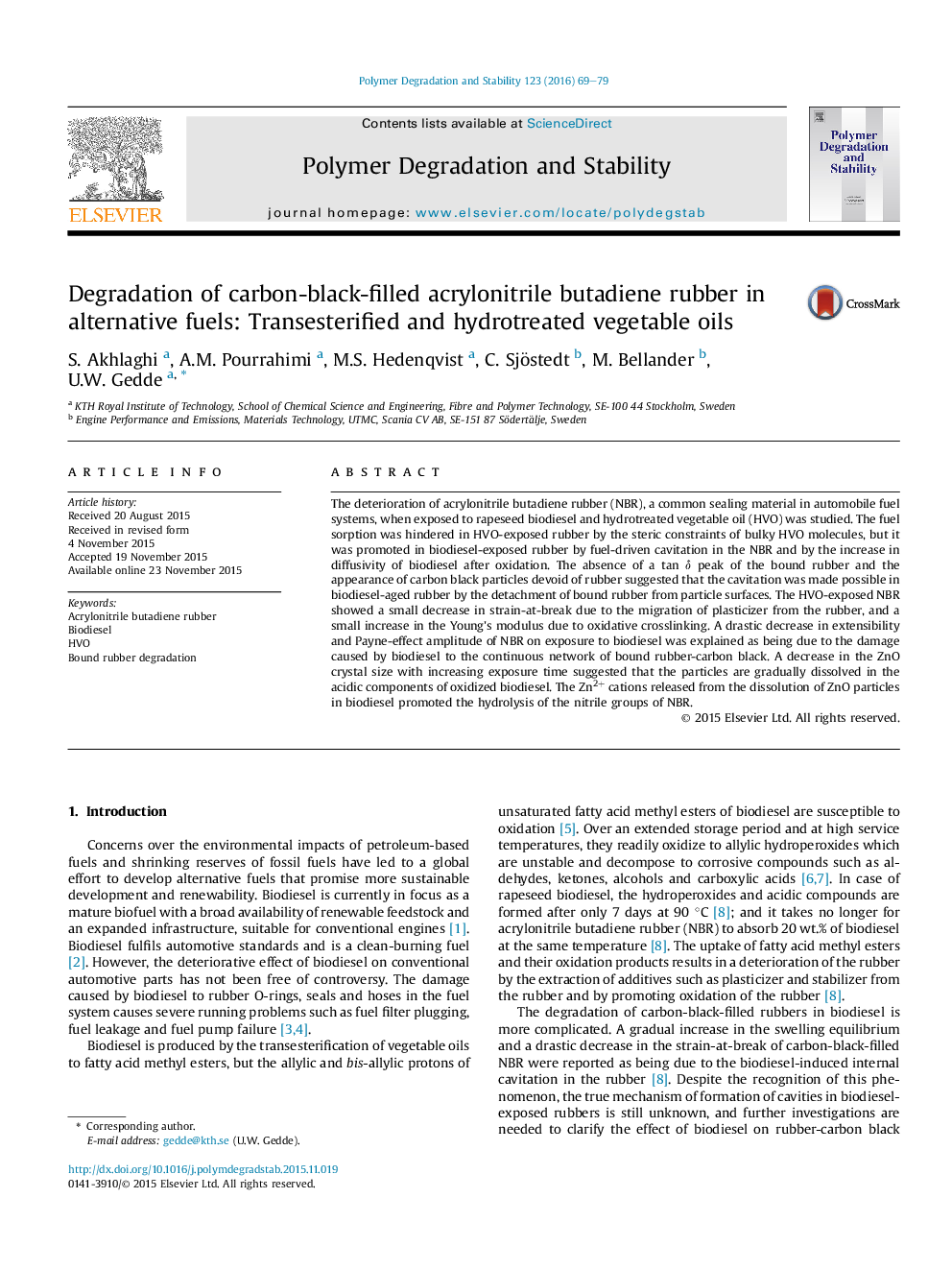| کد مقاله | کد نشریه | سال انتشار | مقاله انگلیسی | نسخه تمام متن |
|---|---|---|---|---|
| 5201235 | 1502890 | 2016 | 11 صفحه PDF | دانلود رایگان |
The deterioration of acrylonitrile butadiene rubber (NBR), a common sealing material in automobile fuel systems, when exposed to rapeseed biodiesel and hydrotreated vegetable oil (HVO) was studied. The fuel sorption was hindered in HVO-exposed rubber by the steric constraints of bulky HVO molecules, but it was promoted in biodiesel-exposed rubber by fuel-driven cavitation in the NBR and by the increase in diffusivity of biodiesel after oxidation. The absence of a tan δ peak of the bound rubber and the appearance of carbon black particles devoid of rubber suggested that the cavitation was made possible in biodiesel-aged rubber by the detachment of bound rubber from particle surfaces. The HVO-exposed NBR showed a small decrease in strain-at-break due to the migration of plasticizer from the rubber, and a small increase in the Young's modulus due to oxidative crosslinking. A drastic decrease in extensibility and Payne-effect amplitude of NBR on exposure to biodiesel was explained as being due to the damage caused by biodiesel to the continuous network of bound rubber-carbon black. A decrease in the ZnO crystal size with increasing exposure time suggested that the particles are gradually dissolved in the acidic components of oxidized biodiesel. The Zn2+ cations released from the dissolution of ZnO particles in biodiesel promoted the hydrolysis of the nitrile groups of NBR.
Journal: Polymer Degradation and Stability - Volume 123, January 2016, Pages 69-79
